
How the Xbox got its good looks
16 min read Jan 19, 2023
When Microsoft unveiled the Xbox One S in 2016, I was dumbfounded. Every previous console from Redmond screamed “gamer.” The original Xbox was a literal interpretation of the name — a box shaped like an X. The One S, a tasteful perforated white slab, looks like it came from Kronberg at Braun. How then, could the company once laughed at for its lack of taste, create something this beautiful?

Microsoft, Goliath
To find out, we need to go back to the time in which it was conceived, the late 90s.
Steve Jobs had just retaken the helm at Apple, yet the company’s survival was anything but certain. Other computer manufacturers were continuing to thrive, but it was clear who was the Goliath of personal computers — Microsoft.
In 1998, when Windows 98 was released, one hundred million PCs were sold worldwide1. More than eighty five percent of them ran Windows2. Microsoft got paid for every one of those Windows licenses alongside other moneymakers like Office. Nevertheless, every corner of the organization continued searching for new ways to cement their dominance.
One opportunity was the living room. To PC manufacturers, the living room was a veritable battle ground. The PC already controlled the office desk. Whoever conquered the living room, would rule a room that people were spending nearly every waking hour in staring at the TV3.
Xbox: getting started
In the late 90s , whispers of a Microsoft console could be heard all over the sprawling Redmond campus4. Members of the failed 3D0 project wanted a second try at competing with Nintendo, Sega, and Sony. The DirectX team saw an opportunity to apply their technology to a dedicated game system. Rick Thompson, hearing of how the new PlayStation 2 would run Linux, saw it as Sony encroaching on Microsoft’s home turf5. Later at an executive retreat, Rick suggested a home-grown game console6, kicking off the project, which would later be called the DirectX Box, or Xbox for short7.
What ensued is all the infighting and messiness one would expect from a high-stakes corporate project. For the Xbox to be successful, the company had to not only design hardware on a scale they had never done before. They had to build out a supply chain, craft a retail strategy, attract developers to build out a launch day game library, and more.
The whole tale is recounted in a six-part docuseries and a book from an original team member. Conspicuously, there is little, if any mention, of how Xbox device itself was designed.
In 2000, Bill Gates gave the keynote at GDC. In the latter half of the presentation, he alongside Seamus Blackley, revealed what they called the “show box” — a large X with a mirrored finish. Each of these boxes, taken to meetings and conventions, is reported to have cost as much as a small car to produce.
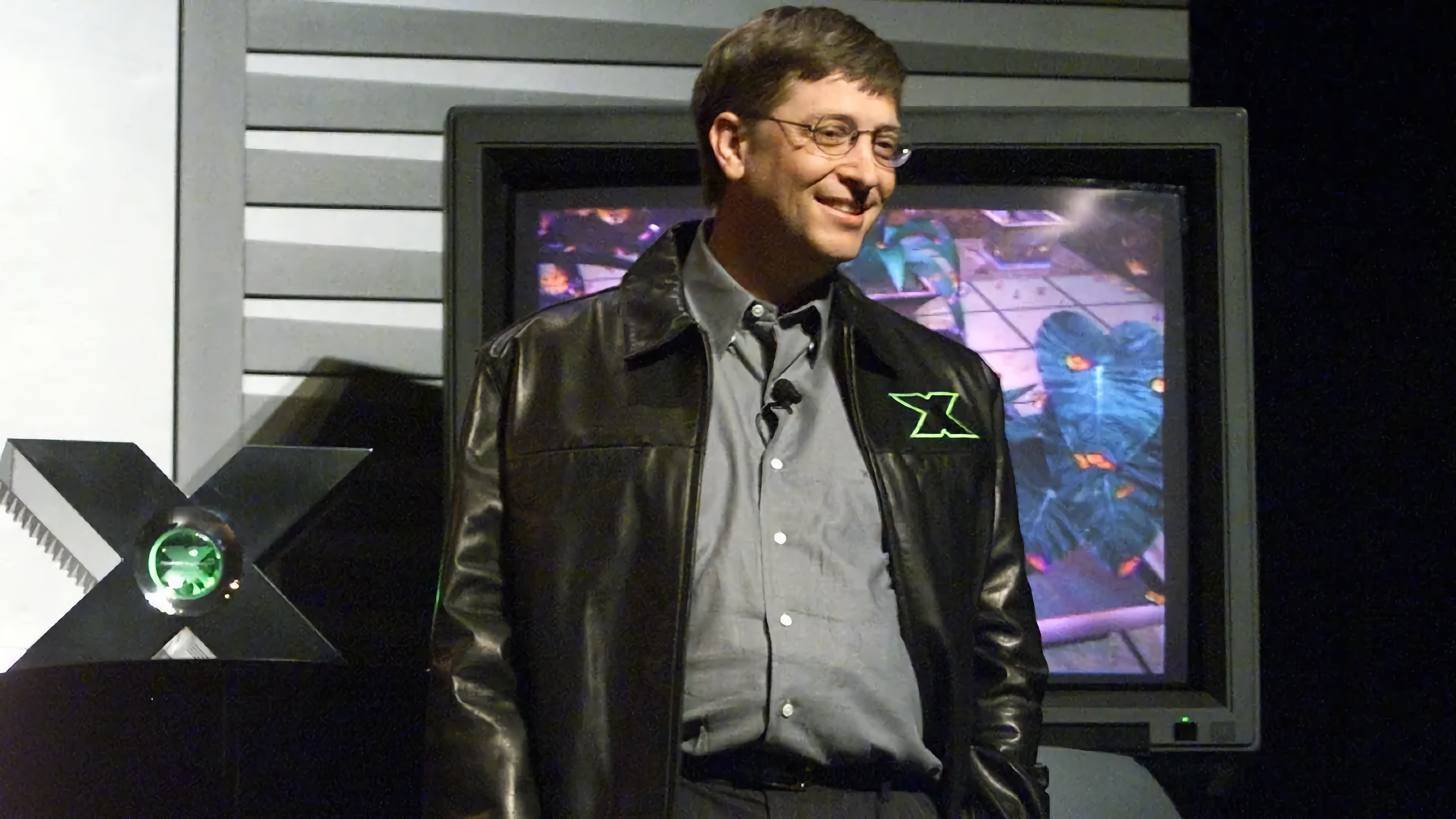
Seattle design consultancy Teague was responsible for translating that concept into reality. The result is the Xbox from 2001 that we all know well. The exterior returned to a more practical form factor, while preserving as much of the X shape as possible.
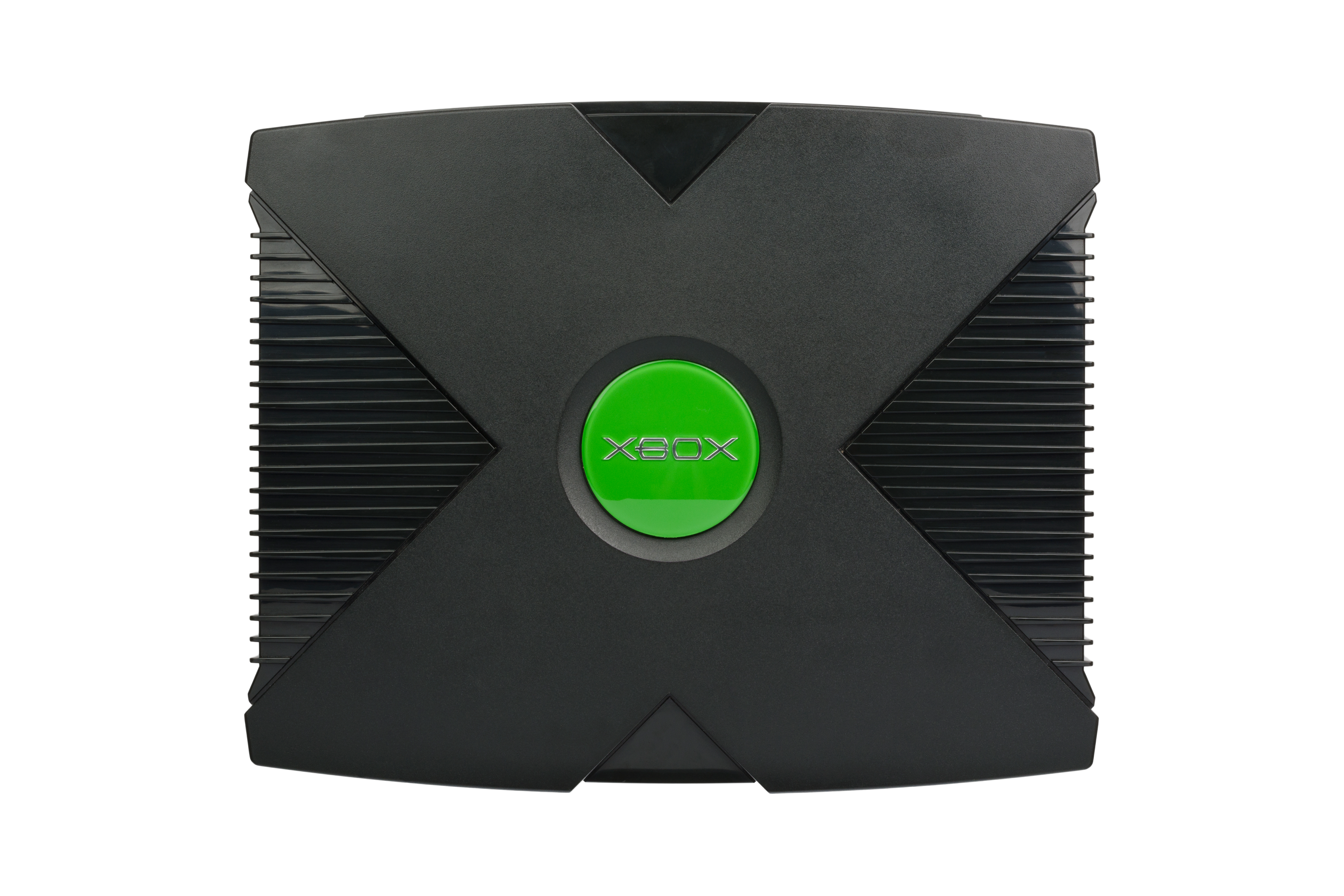 The Xbox
The Xbox
The design is far from timeless. The literal interpretation of the name into the form is not only lazy, it ignores customer needs and the physical environment it would eventually inhabit. Imagine if Apple sold a computer in the shape of an Apple!
I don’t want to fault any single individual, though. The Microsoft at the time, though it excelled at technology and business, did not value design. Microsoft rightfully earned its place as the perennial punchline of jokes about bad design.
My guess is that the X-shaped was the result of top-down pressure and not the result of a holistic design process. For proof, look no further than the enormous “Duke” controller that Xbox was launched with. By the time a talented, RISD-trained designer was brought in, concept sketches were approved by executives and prototypes PCBs were already in production8. There was no space to consider ergonomics. Unsurprisingly, the “Duke” was quickly replaced by the smaller “S” controller sold in the Japanese market.
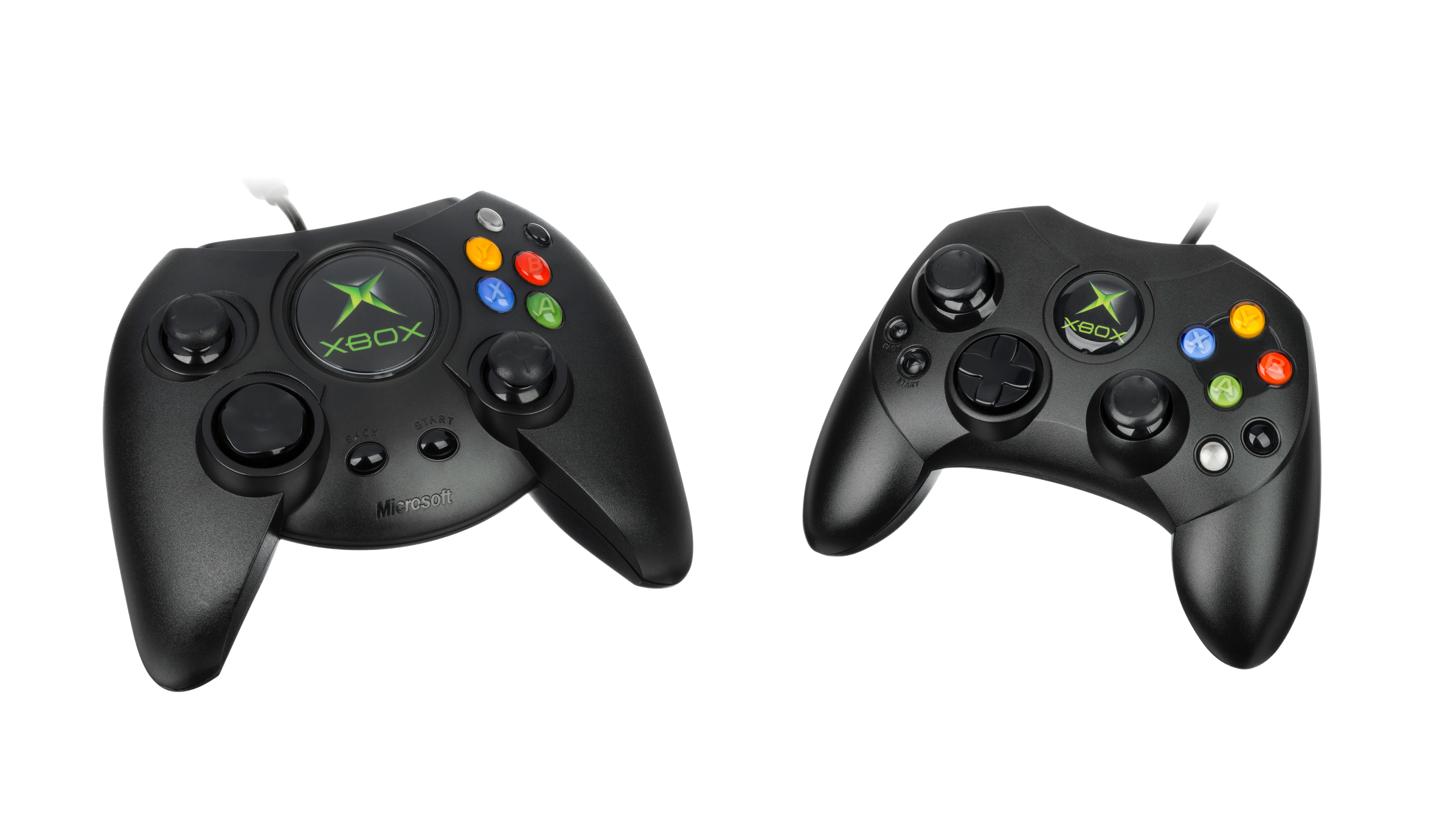
Xbox 360: caring about design
Regardless of its design shortcomings, the Xbox succeeded enough in the market to earn a second generation. As the Xbox team worked on what was later named the 360, design as a priority was elevated9. The internal team met with design consultancies all around the world, eventually pitting six of them against each other10. Microsoft chose Japan-based Hers Experimental Design Laboratory to begin the project with an eye for what would be successful in the Land of the Rising Sun. Eventually, SF-based Astro Studios and Mike Simonian of Mike and Maaike took over to finish the 36011, which launched in 2005.
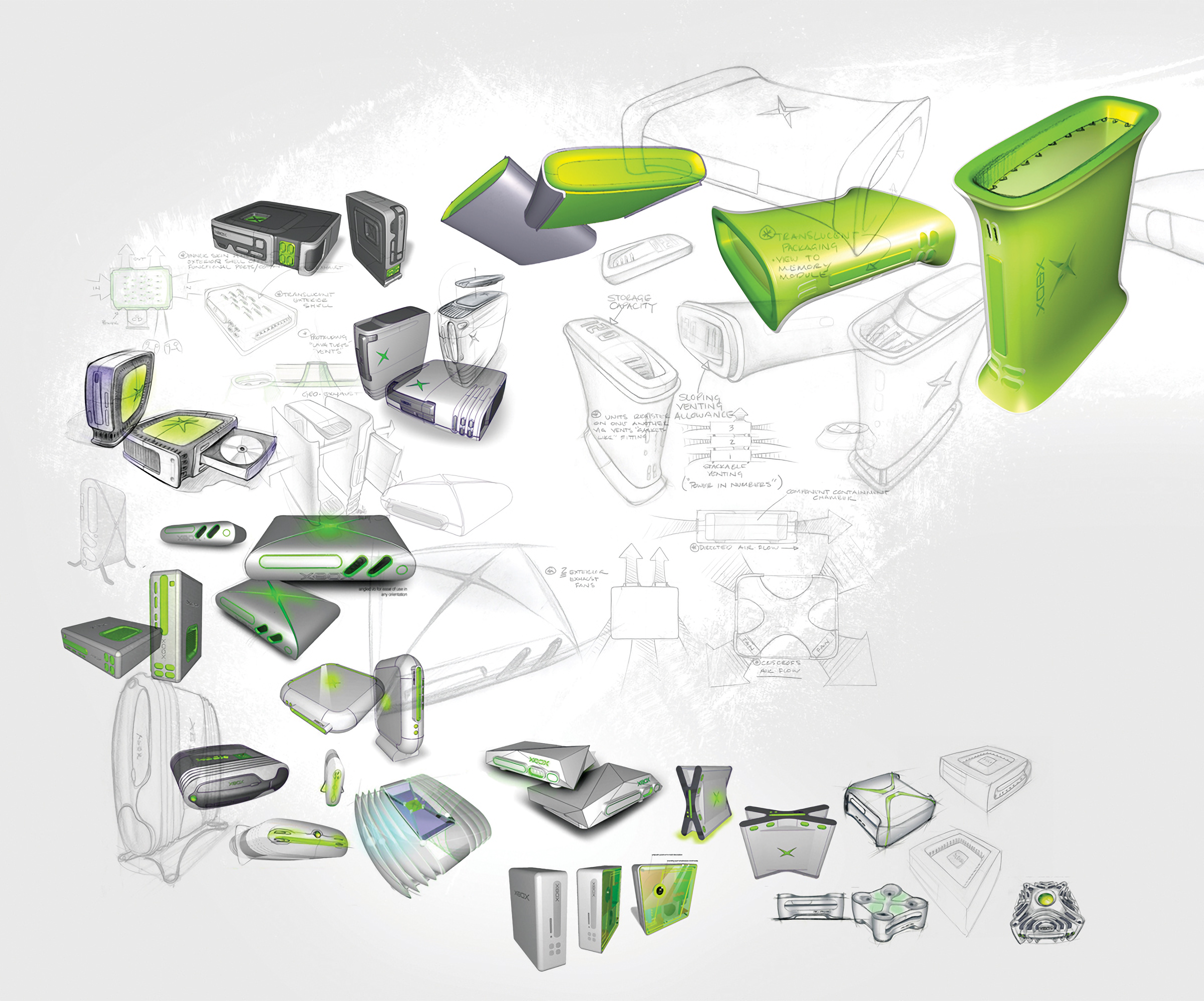 Sketches from 360 design process.
Image credit Astro Studios.
Sketches from 360 design process.
Image credit Astro Studios.
The result is wildly different to before. The angled black box gave way to a curvy white tower. Interchangeable faceplates offered buyers a way to customize the front of the device to their own taste. While the faceplates may not have caught on12, they were a sign that Microsoft was putting more attention towards a human-centered design process. They cared how the 360 fit into peoples’ lives.
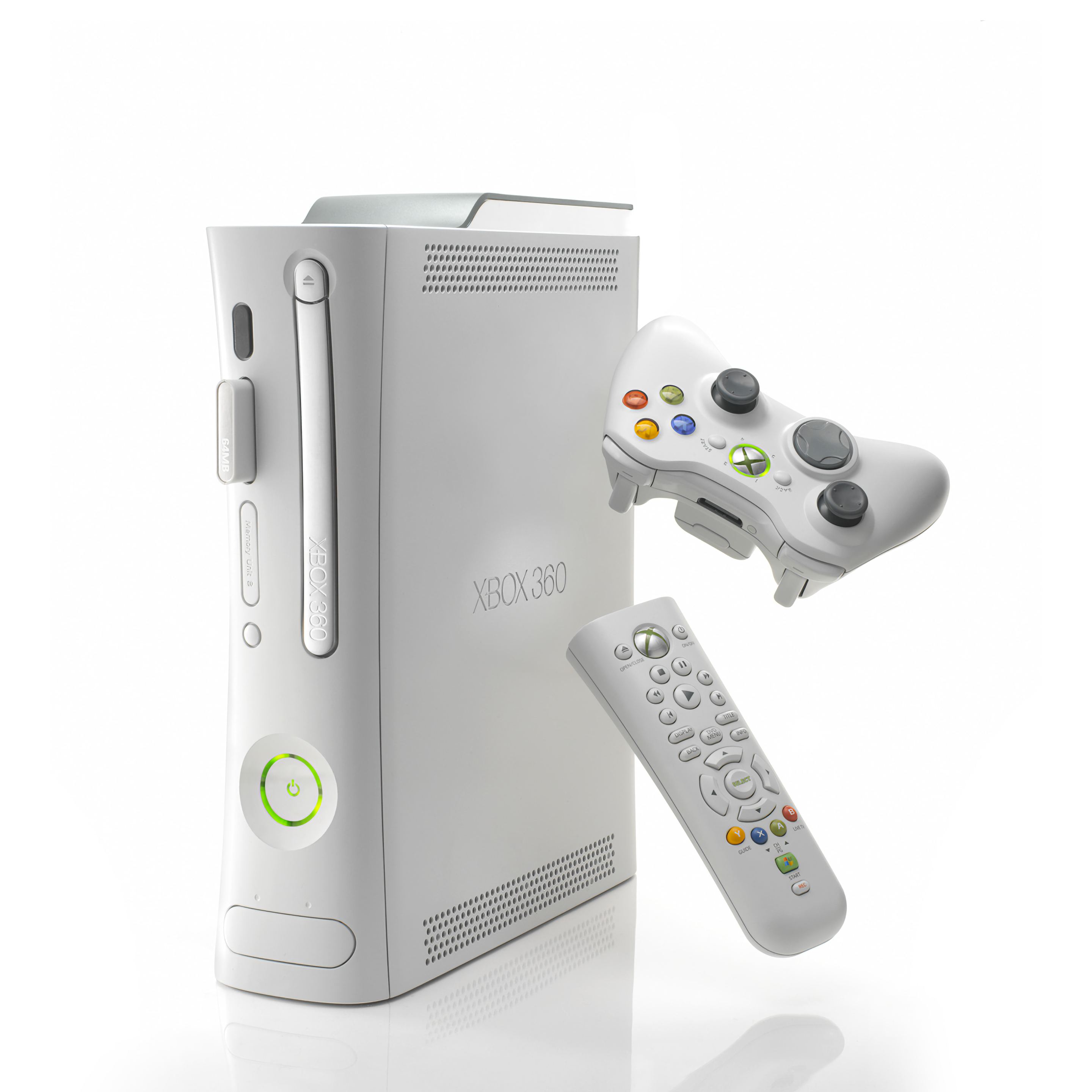 The final Xbox 360 design. Image
credit Astro Studios.
The final Xbox 360 design. Image
credit Astro Studios.
The name 360 signaled a new development in Microsoft’s vision for the Xbox. They saw it as a digital portal to a virtual world13. The team described the shape as an “inhale — it’s like the console is breathing in, pulling in all of this energy before you release it again”14. What’s troubling about this inhale idea is that it isn’t rooted in customer needs or functional constraints. It’s arbitrary.
The arbitrariness of the 360’s design was the least of its problems. In the years after launch, Xbox 360s were plagued by a litany of hardware failures that triggered an error code dubbed the “Red Ring of Death.”. Consoles were recalled and a refreshed 360, designed by MINIMAL, was introduced. However, the reputitional damage was done.
 The 360 S
The 360 S
Regardless, something had changed within the Xbox team’s DNA. They cared about design.
Xbox One: bringing design in house
The next Xbox aimed to takeover where the original Xbox and the 360 had left off. The name, Xbox One, hinted to its ambitious mission. This Xbox was meant be the ultimate living room computing device15. In addition to games and streaming, the Xbox One also took in the television signal, allowing seamless switching between games and TV. The Kinect, being bundled with the Xbox, would serve as the voice interface. There was even a forward-looking vision to expand into controlling smart devices around the home.
For the design team, this strategy presented a tall order. Not only would they have to satisfy their core gaming fans16. For the huge bet to pay off, they’d also have to attract a new audience.
Their method was to make something “sophisticated yet approachable, something perfectly at home next to the DVR, DVD player and HD television.”17 In essence, they were targeting a few of Dieter Rams’s ten principles for good design, namely that good design is aesthetic, and good design is unobtrusive.
The design team cast a wide net, making hundreds of prototypes of the console, Kinect and controller18.
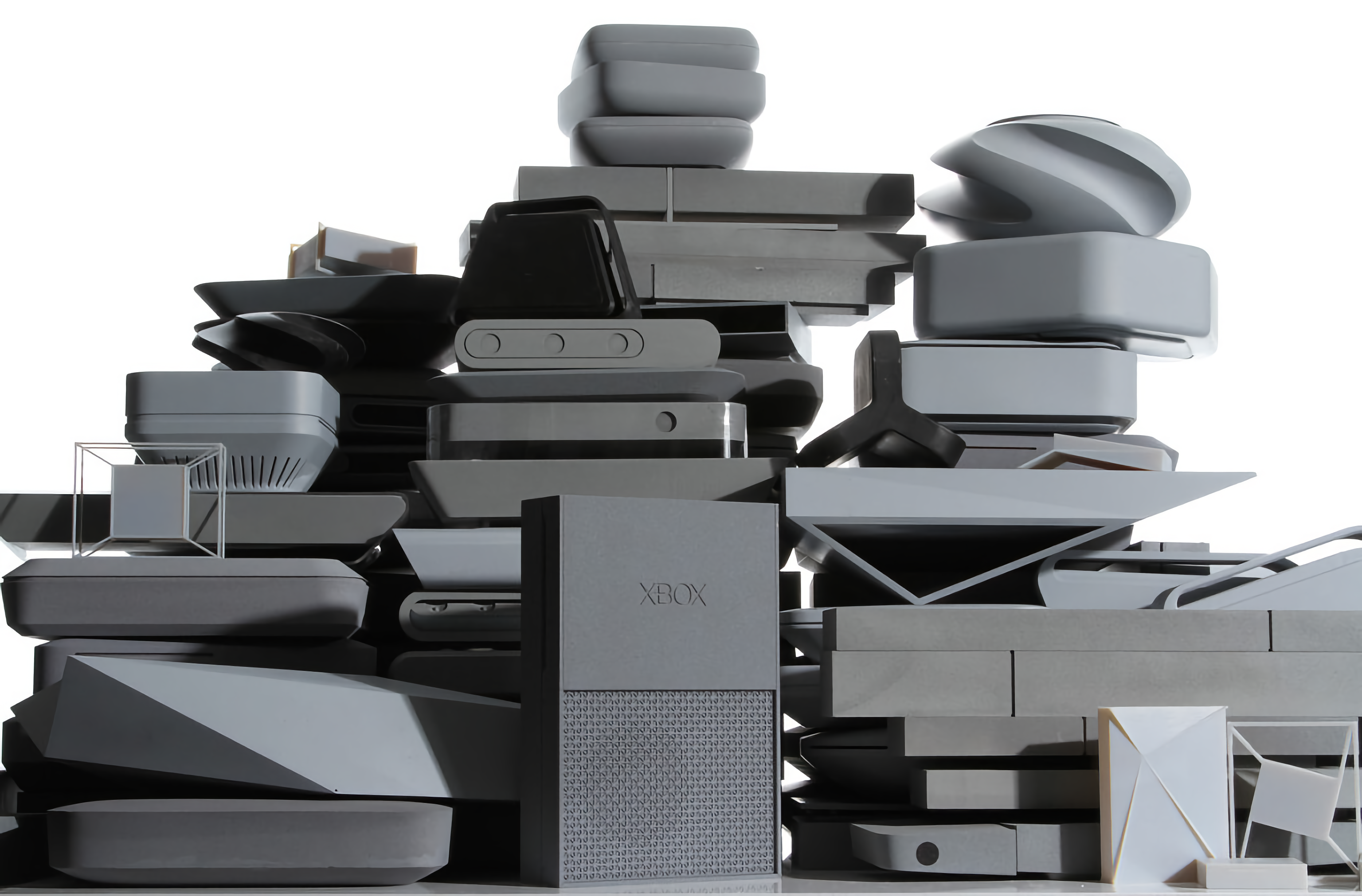 Xbox One
prototypes
Xbox One
prototypes
The direction the team was taking, along with the principles it had mind, were sound. However, the ultimate design of the Xbox One failed in many respects.
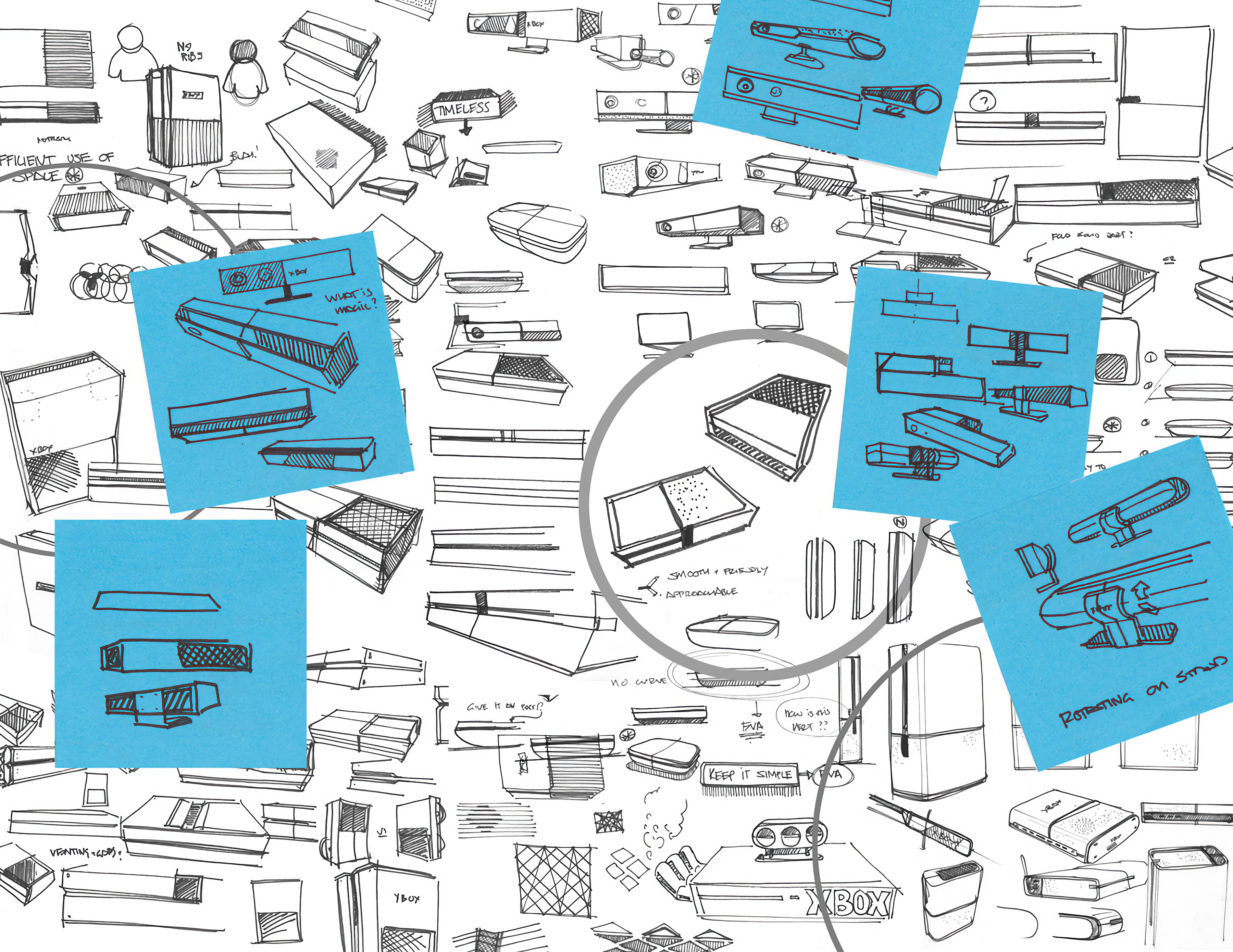 Sketches
of the Xbox One
Sketches
of the Xbox One
First is the continuation of arbitrariness. The dimensions of the device were directly inspired by the 16:9 aspect ratio of high-definition screens19. That aspect ratio is hardly relevant to the dimensions of an object that likely won’t even be placed in way that you can see that ratio.
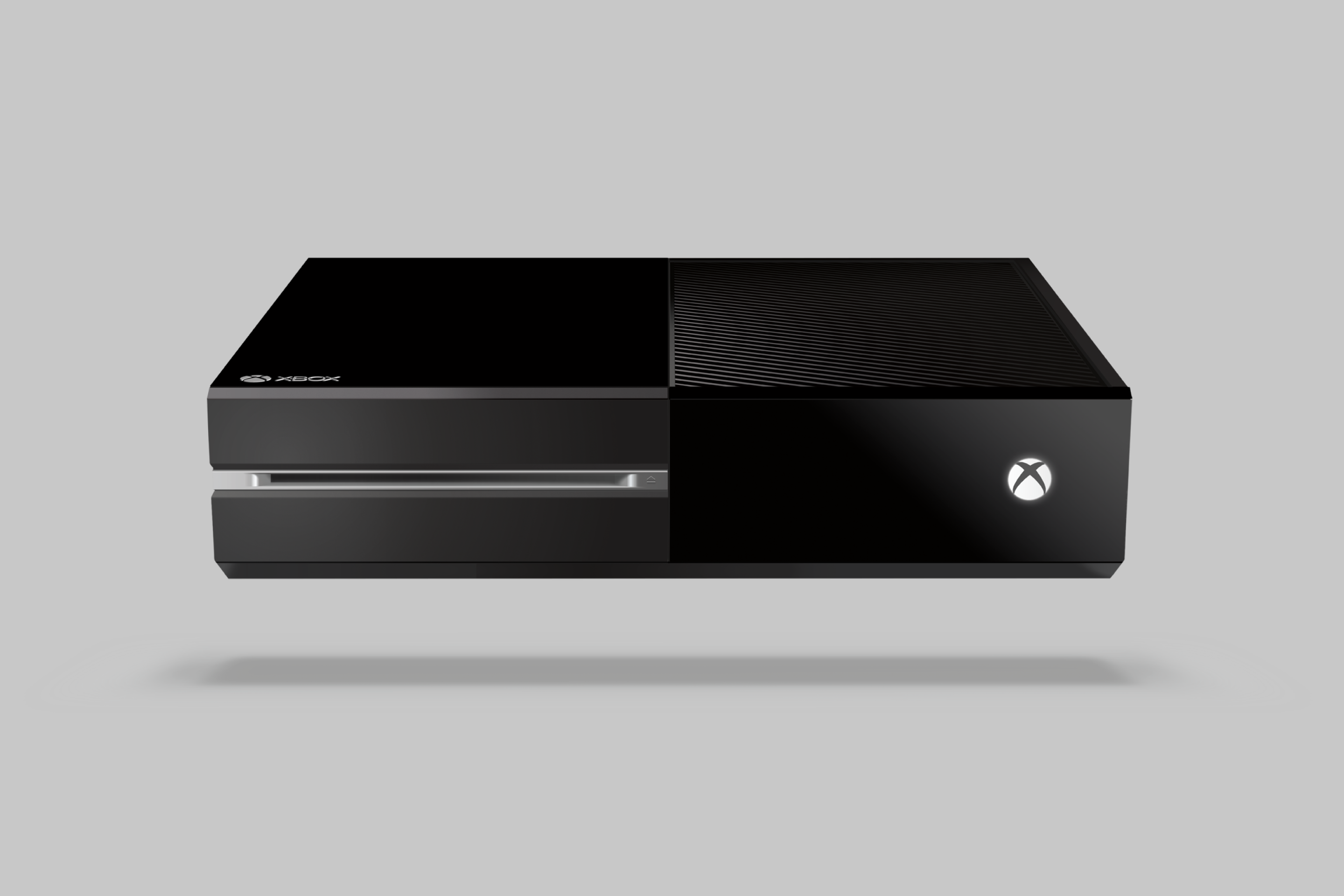 The Xbox One
The Xbox One
On the colors, materials, and finishes side, the “boldly understated” design was manifested in a half-half split between matte gray and glossy black20. The result looks at home with cable boxes and other entirely forgettable appliances.
Commercially, the Xbox One flopped soon after launch in 2013. The voice controls meant to control living room, were extremely unreliable21. The included Kinect meant that the Xbox One was $100 more expensive than Sony’s latest PlayStation. Always-on DRM required gamers to connect to the internet once a day22 (this was later removed). Worst of all, the Xbox team spent so much time boasting about the One’s non-gaming capabilities, that gamers felt betrayed.
Within two months of launch, Don Mattock, the executive accountable for Xbox, left the company23.
While the Xbox One was not a success in comparison to its competitors, PlayStation 4 and Nintendo Switch, It was a leap forward for the design team. The fact that the design team was entirely in-house meant that it could more effectively work alongside other teams to produce tightly integrated products. This foundational change would later bear fruit.
Xbox One S: achieving good design
A year after the troubled launch of the Xbox One, change was in the air in Redmond. Long-time CEO, Steve Ballmer stepped down to make way for new leadership, Satya Nadella. That same year, Satya put Phil Spencer at the helm of Xbox24. Phil immediately steered the ship away from the muddy waters of general entertainment to focus squarely on gaming25.
He asked some difficult questions:
“Were we building products for our reasons or our customer’s reasons? Was our ambition as a company outstripping what our customers wanted to see from our product?”26
By this time, the Xbox design team had expanded considerably. This was a talented team (including Andrew Kim of minimallyminimal.com fame) with the taste and skills needed to find its way to simple, yet powerful products.
 Xbox
One S design process
Xbox
One S design process
The team was given the tough assignment of a mid-cycle refresh to the One, the Xbox One S. This device would not only have to correct strategic mistakes like emphasizing entertainment over gaming or pushing hard on the Kinect. It additionally needed to improve the way it fit in people’s lives.
The team began by listening to customers, who asked for a smaller console that could be placed both vertically and horizontally27.
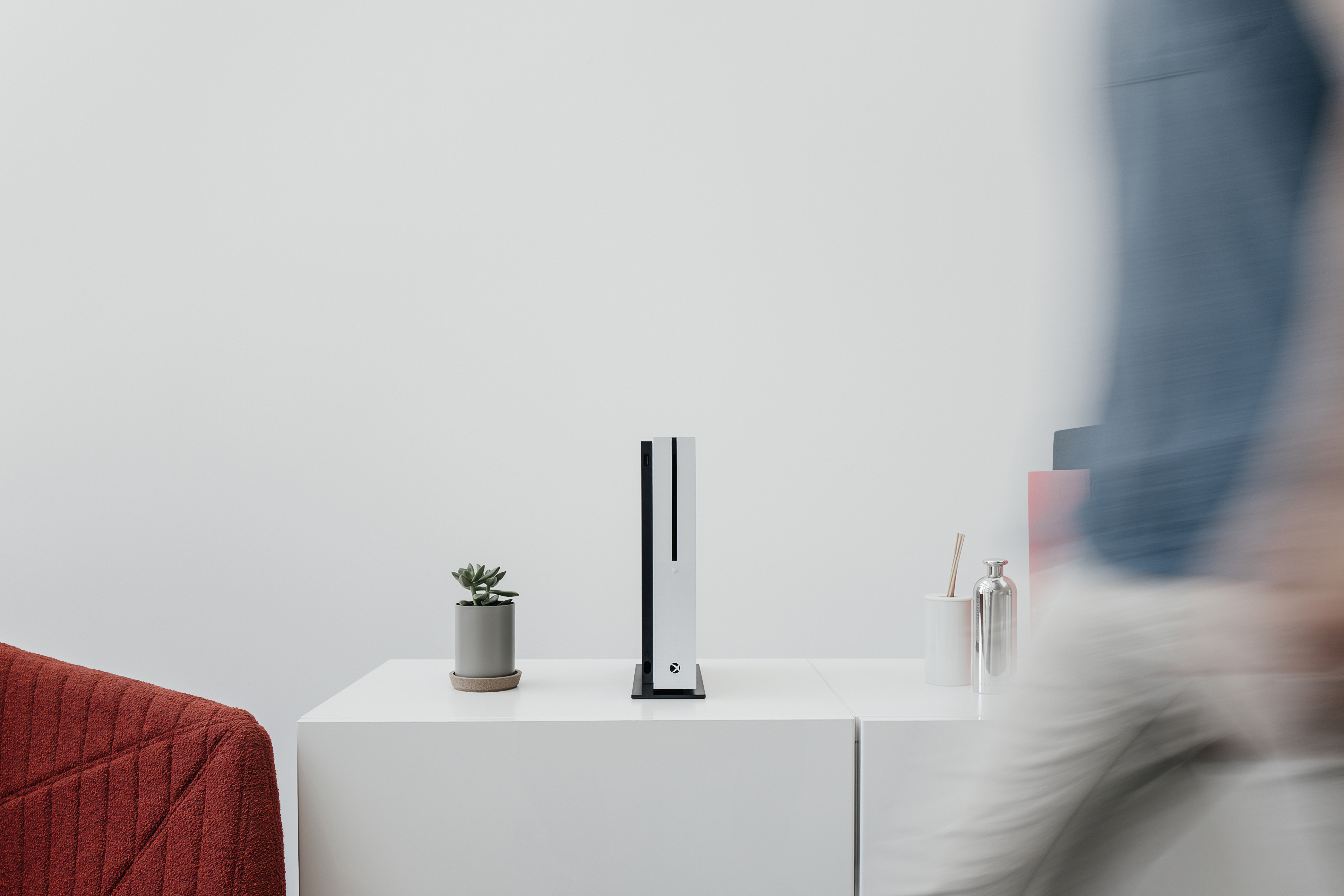
Since Microsoft had brought Xbox design entirely in house, they could work closely with hardware engineers in navigating trade offs between customer needs and functional requirements. The internal component layout was optimized down to the millimeter28, considerably shrinking the device. The formerly external power supply was integrated within the device, another boon for size. The dedicated Kinect port was removed. Though, Microsoft offered a free USB adapter to any players who still wanted to use a Kinect29.
 Xbox One
S prototypes
Xbox One
S prototypes
The black color was dropped in favor of a light gray. Not only did this change win over fans who previously liked the white 360, it visually signaled that the One S is something entirely new.
The top case is split in two. One half is flat, while the other is covered in a grid of circular ventilation holes — a subtle nod to the matte/glossy split of its predecessor.
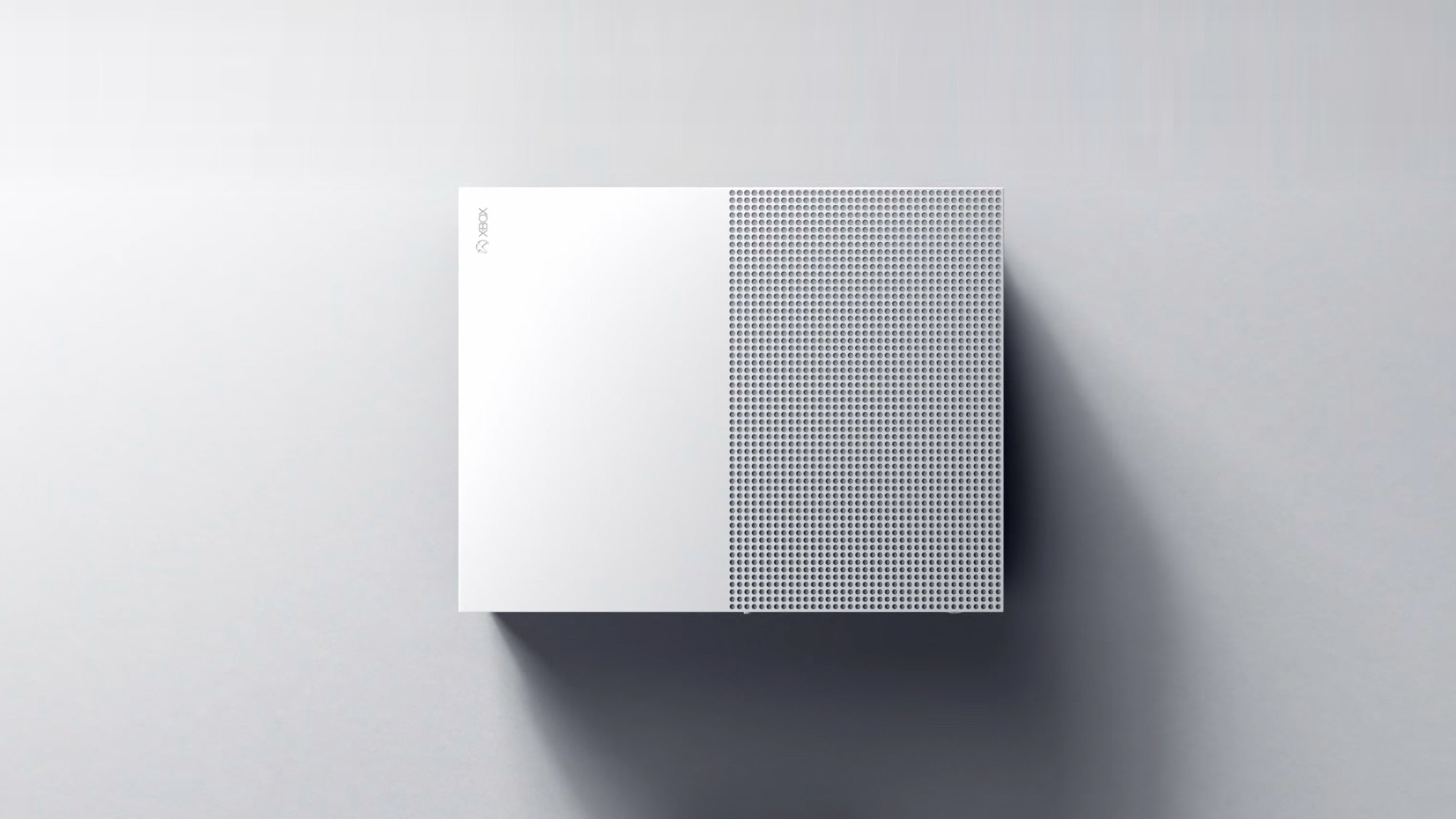
Look at an angle and you’ll see that only the holes above the fan go all the way through. The others serve to preserve the simple rectilinear form.
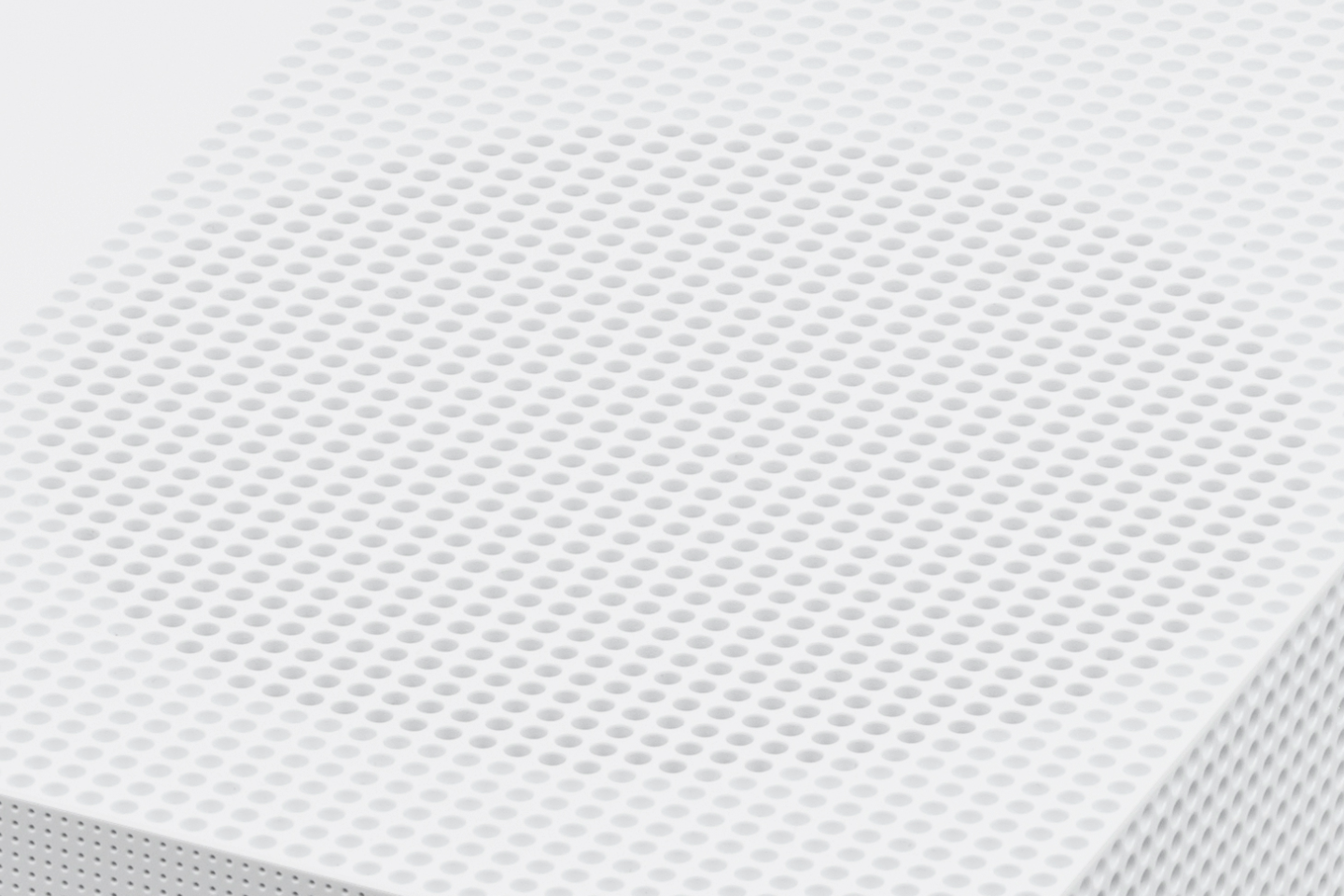
One of my favorite details is the smaller black base that the large grey box sits atop. This black rectangle houses a USB port, the IR receiver, and controller pairing button.
 Xbox One S
base
Xbox One S
base
Go to the back of the device and the beauty continues. You’ll see more ventilation and all of the ports neatly aligned out back. In comparison, the original Xbox One looks like a complete mess out back.
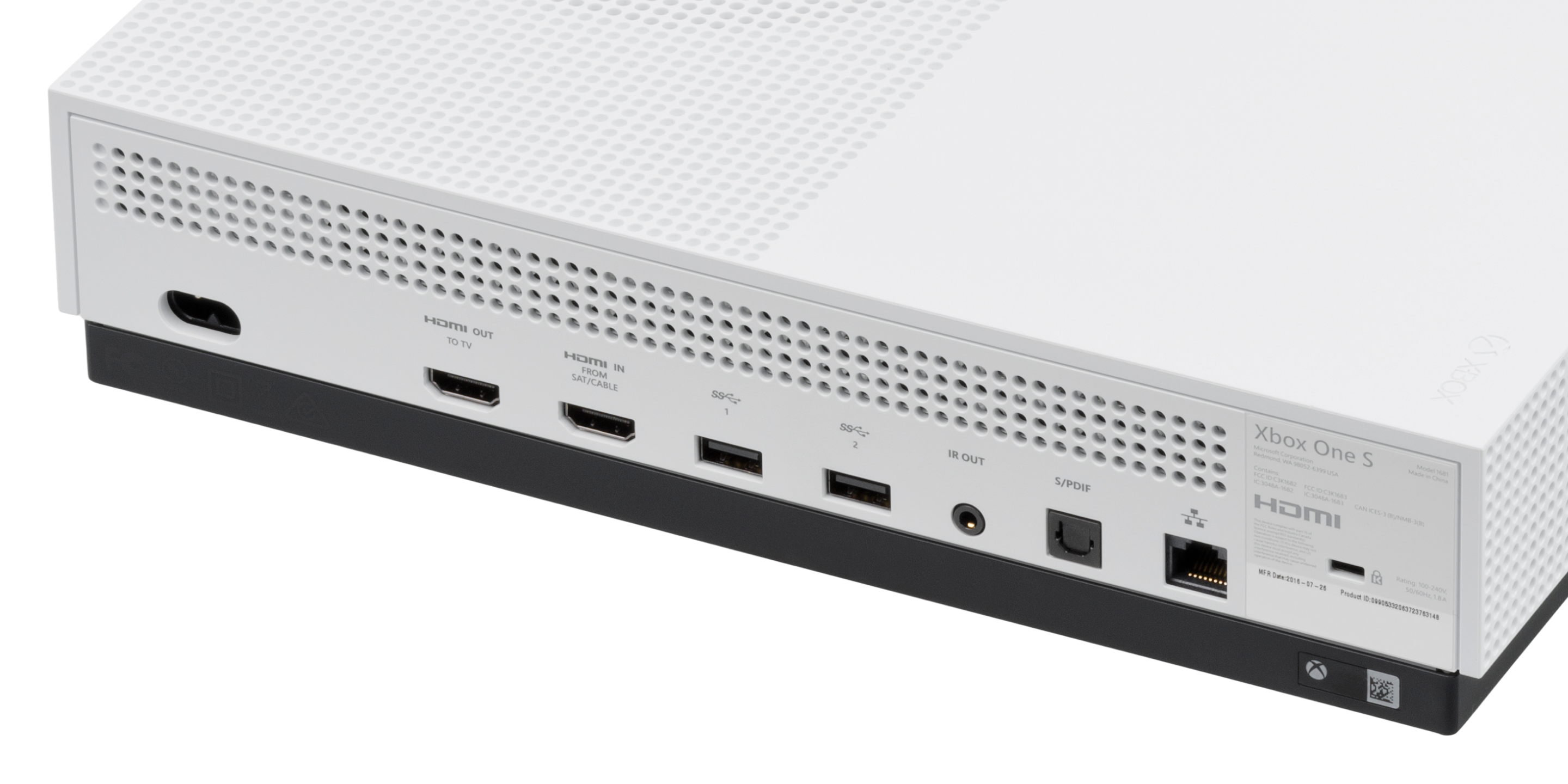 Xbox One S
back
Xbox One S
back
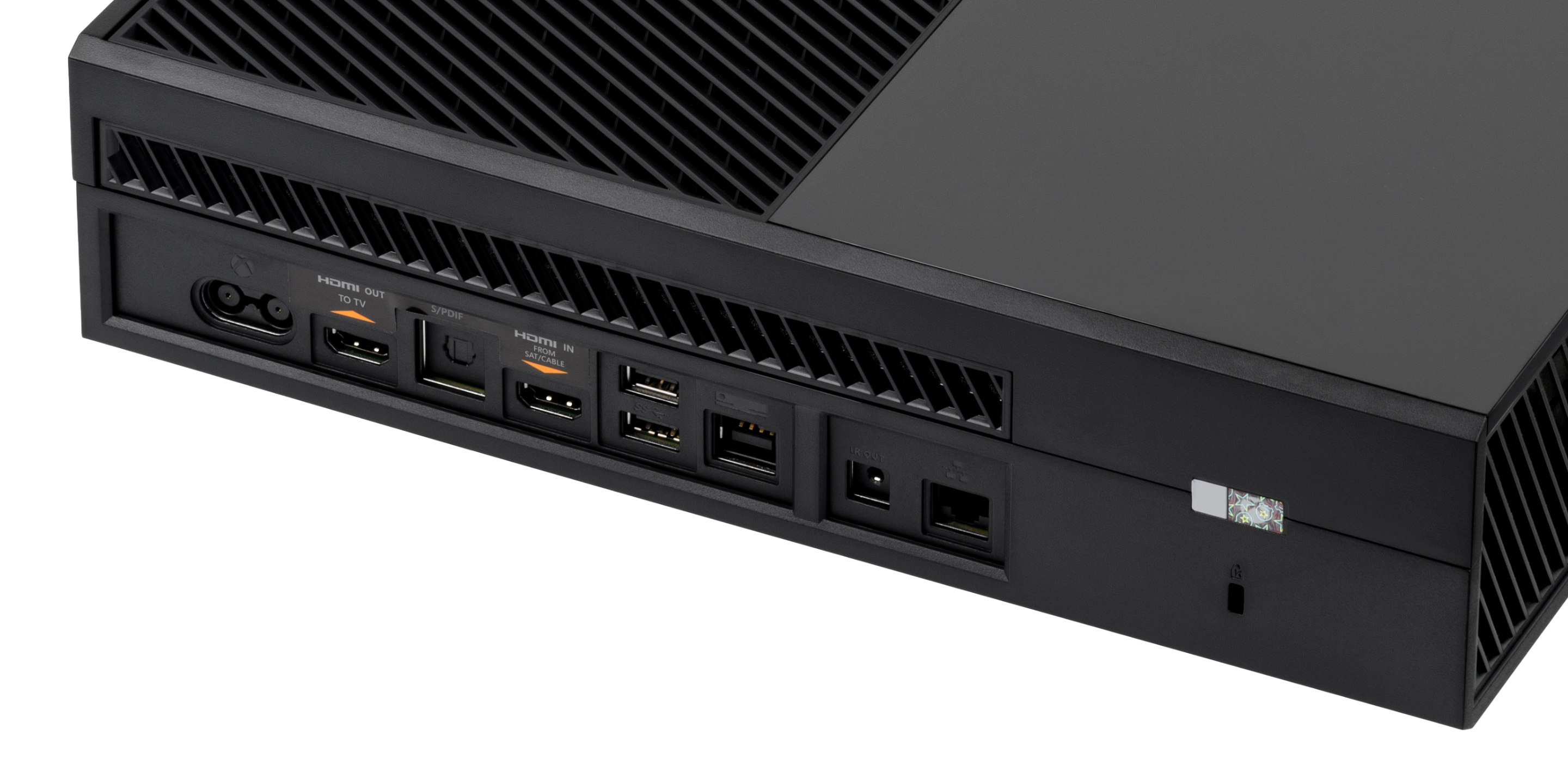 Xbox One back
Xbox One back
In an interview, one of the Xbox One S’s designers said that, “it’s impossible to design a truly timeless games console”30s
Looking at the One S, I disagree. This device will go down in history as an icon because it is a visual distillation of the game console archetype. Run down Dieter Rams’s ten principles and it’s hard to find one that the One S doesn’t adhere to. This device, while it may not be as famous as Dieter’s legendary SK4 photograph, is just as timeless in my book.
Xbox One X: iterating on good design
At E3 2016, when Phil Spencer announced the Xbox One S on stage, he also teased Project Scorpio, a beefier console capable of playing games at 4k31. The next year, Project Scorpio materialized as the Xbox One X. Visually, it felt cut from the same cloth as the One S. Inside, it was all new.
Given the new 4k-capable hardware, the team returned to the drawing board to start from scratch32. This meant that the design and engineering teams had complete freedom in their approach.
The motherboard was flipped upside down and fixed to the ceiling of the enclosure33 to free up space below and make the device smaller.
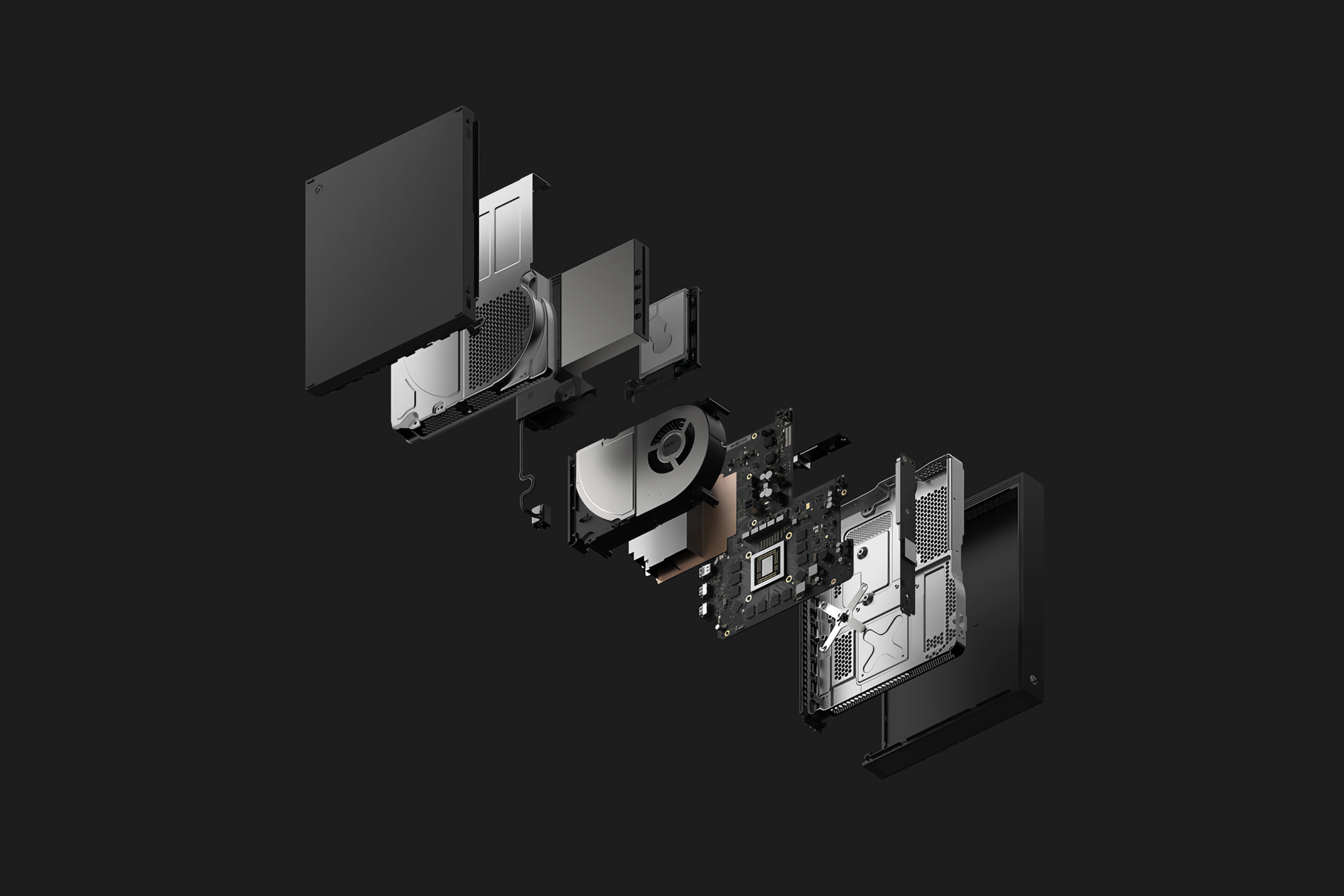
The power-hungry system on a chip (SOC) is cooled by a massive vapor chamber cooler and fan pulling in air from the sides and exhausting out the sides.
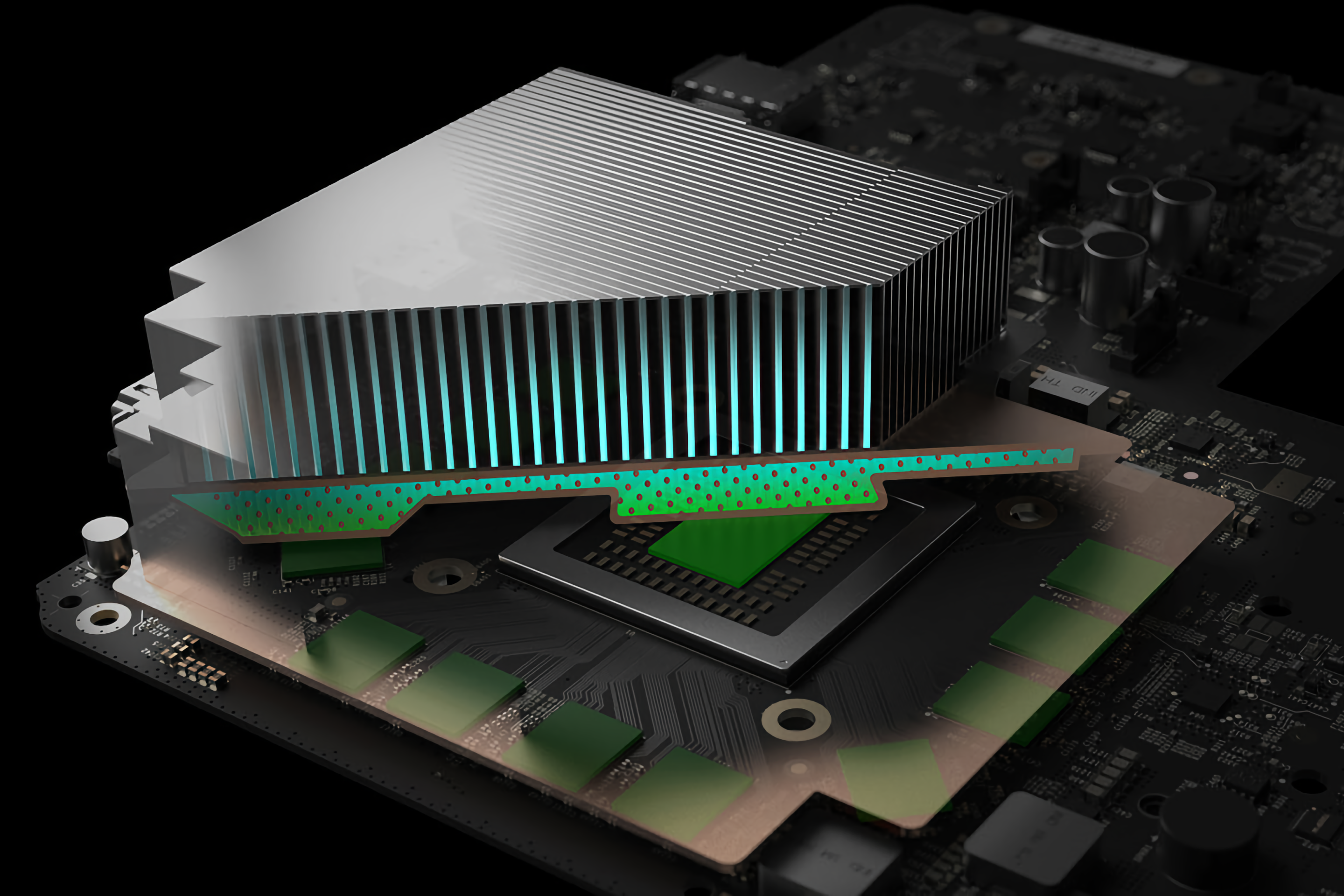 The
vapor chamber cooler
The
vapor chamber cooler
The hard disc drive and optical disc drive were stacked to make room for the integrated power supply34. These technical decisions contributed to eventual small size of the Xbox One X.
The “base” housing the USB port, IR receiver, etc. continued with the Xbox One X. In a genius move of further simplification, the opening for the optical disc was moved into the gap between the top and the base, making the front a single rectangle interrupted only by the Xbox logo (which functions as both a status light and power button).
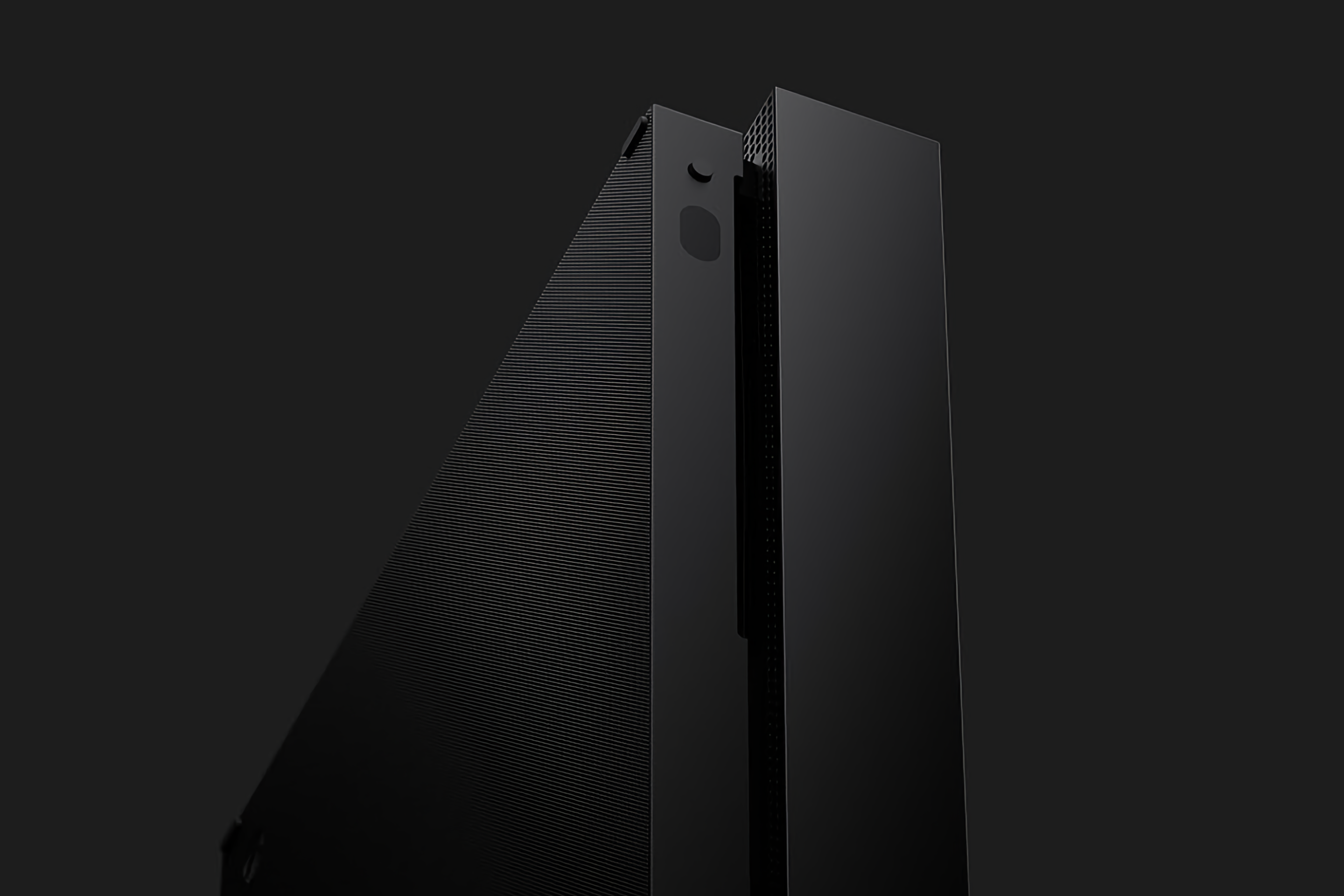
Its monolithic black form is not an accident, but a reference to the monolith from 2001: A Space Odyssey35.
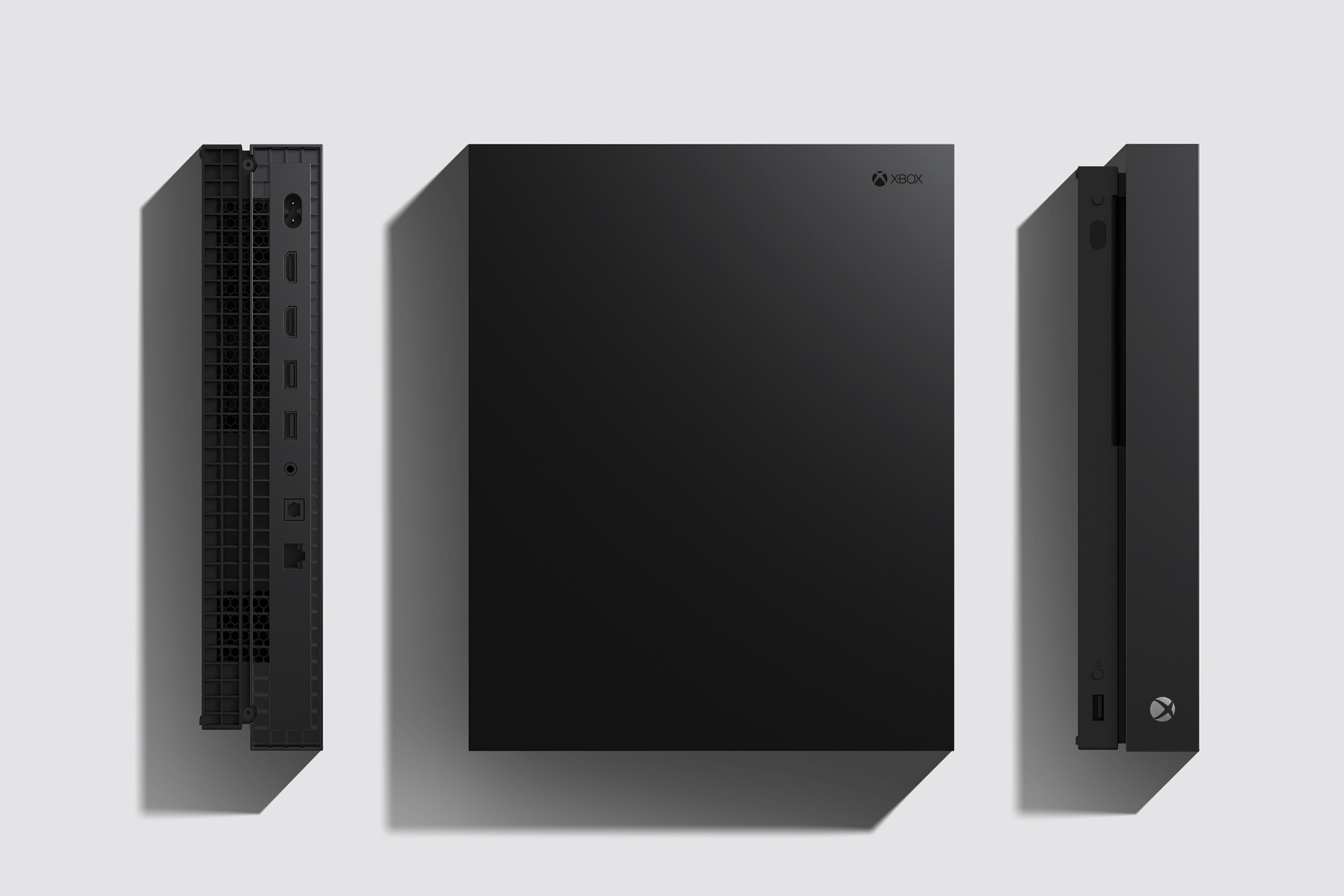
Later in the lifecycle of the One S and One X, a new One S was released without an optical drive. These two devices — an entry level model focused on digital games and a performance model for enthusiasts — foreshadowed Xbox’s future strategy.
The One S and One X were the answer to Phil Spencer’s earlier question of whether they were building products for their reasons or customer’s reasons. These two devices tightly focused the Xbox, both internally and externally, squarely on gamers and gaming. Any other use was cast aside as a nice-to-have.
Xbox Series S/X: focusing on gaming
The first two consoles to be created entirely from the ground up under Phil Spencer’s leadership are the Series S, Series X, which both launched in late 2020. These two devices carry on the roles of the previous One S and One X.
With the renewed focus on gamers, the design team began the research process in gamers’ homes. They brought numerous foam prototypes to test placement and orientation in their furniture36. The goal was to find dimensions that could fit in as many homes as possible.
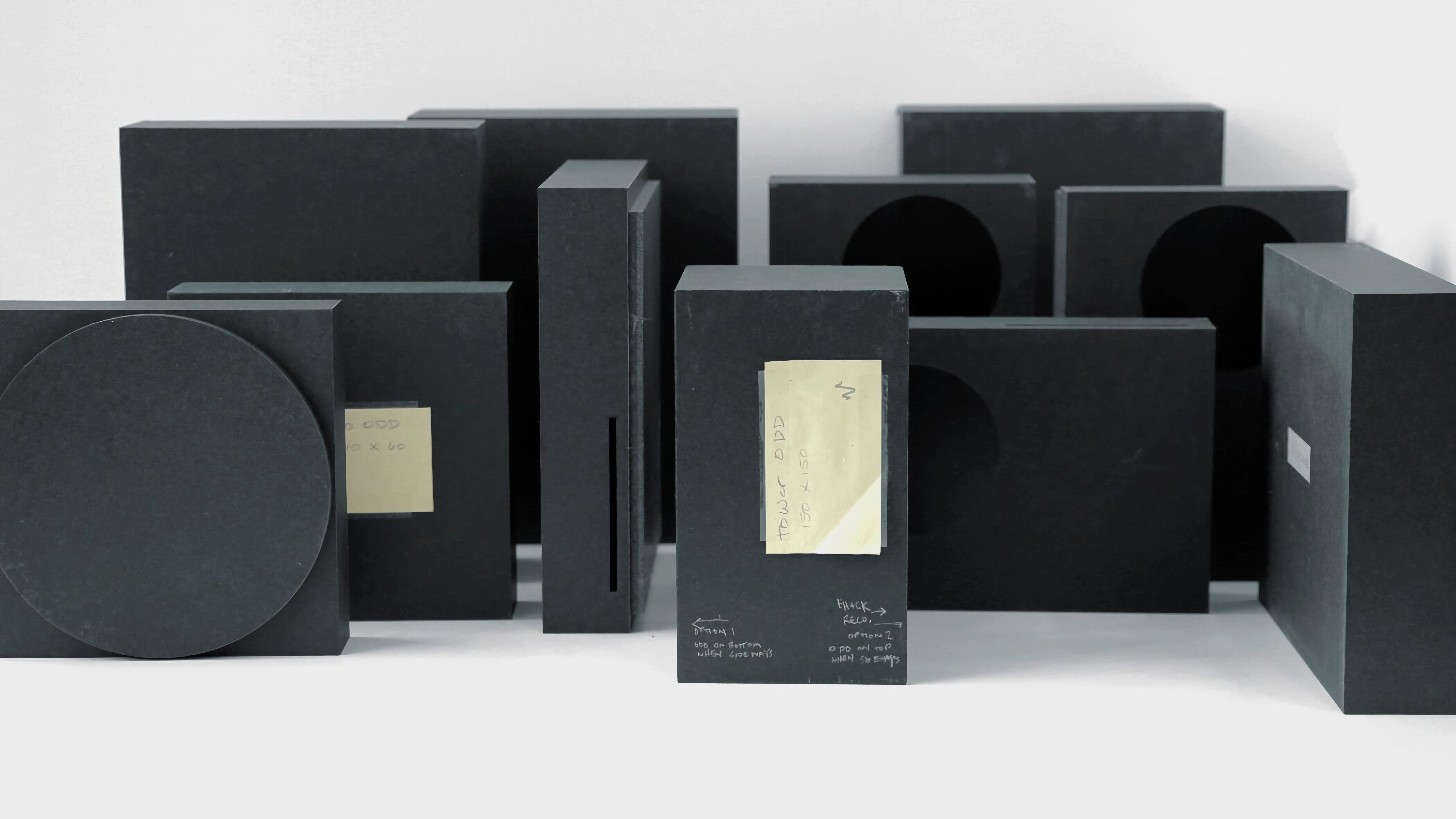 Foam
prototypes of the Series X
Foam
prototypes of the Series X
As for aesthetics, they returned to the original vision of making devices that “can stand out or disappear into the environment they’re placed in.”37
Like with the One X, the design of the Series X started inside with thermal performance requirements and then proceeded outside to form something that could fit easily in people’ homes38. Of the many shapes proposed, a rectangular prism almost exactly two cubes stacked — dubbed the “Tower” — won out.
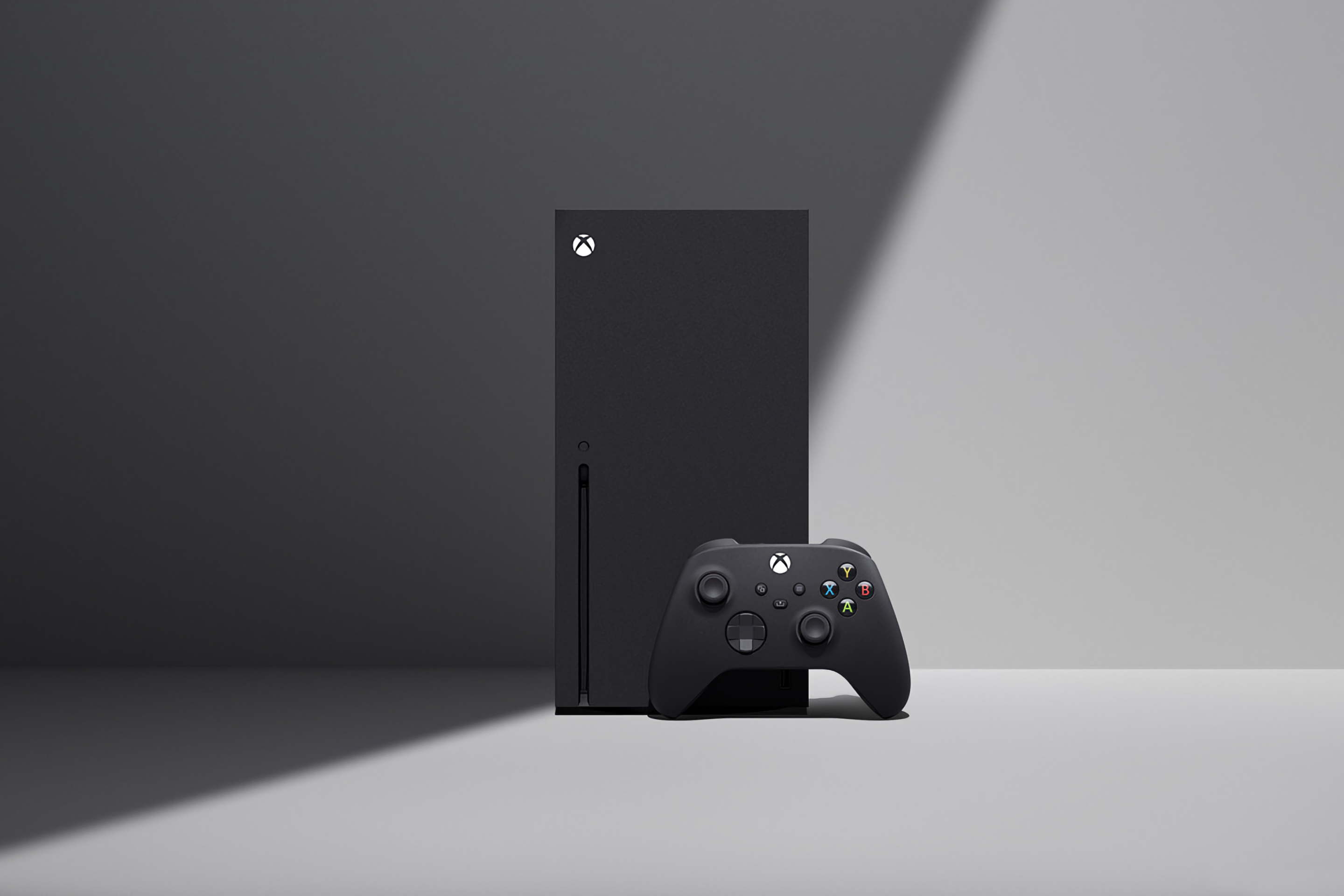 The Xbox Series
X
The Xbox Series
X
The dimensions, though unusual, maximized the ways and places that that Xbox Series X could be placed39. Inside, the motherboard is split into two pieces and all the components are cooled by a single vertically oriented fan40. The solution is quite similar to Apple’s 2013 Mac Pro.

The team dubbed the Series S “Slice”, because it’s the same height and width of the Series X, but far slimmer given the lack of an optical drive and lower thermal needs41.
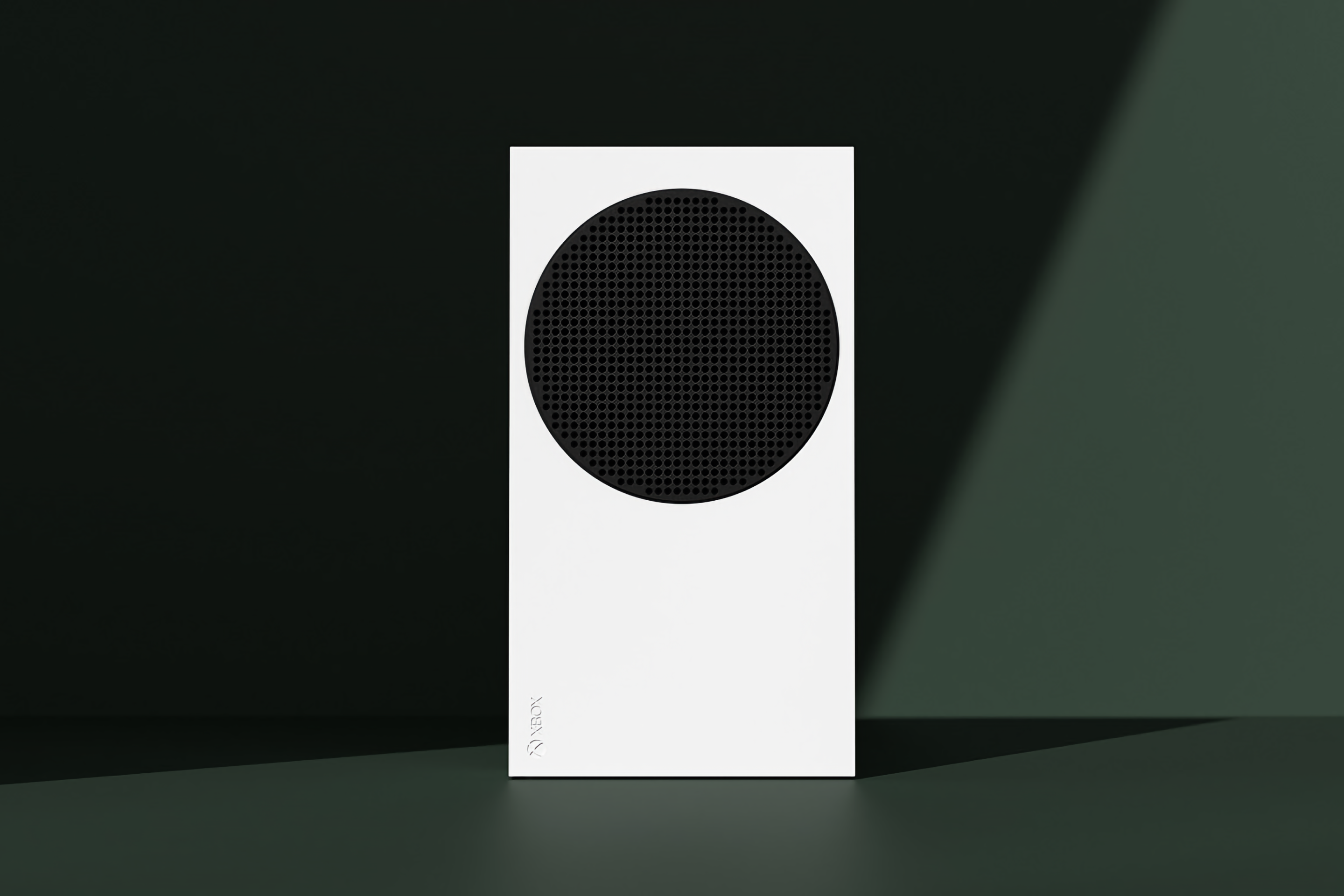 The Xbox Series
S
The Xbox Series
S
The external forms are drawn from primitive shapes in a strategy the design team calls “Intelligent Geometry”42. The results are visually striking, yet thoroughly rooted in functional requirements, like free area ratio (FAR) of ventilation holes43.
By using primitive shapes, there is a risk of making something basic. Through the careful application of depth, colors, materials, and finishes, they design team avoided that risk44.
For example, the ventilation holes for the Series S were treated differently than with the One S. A large black circle envelops and hides the individual holes45. At the same time, the black circle provides a striking tieback to the Intelligent Geometry strategy.

If you glance at the vents of the Series X from an angle, you’ll notice they are green inside, a subtle nod to the color that has been inextricably linked to the Xbox since its inception.
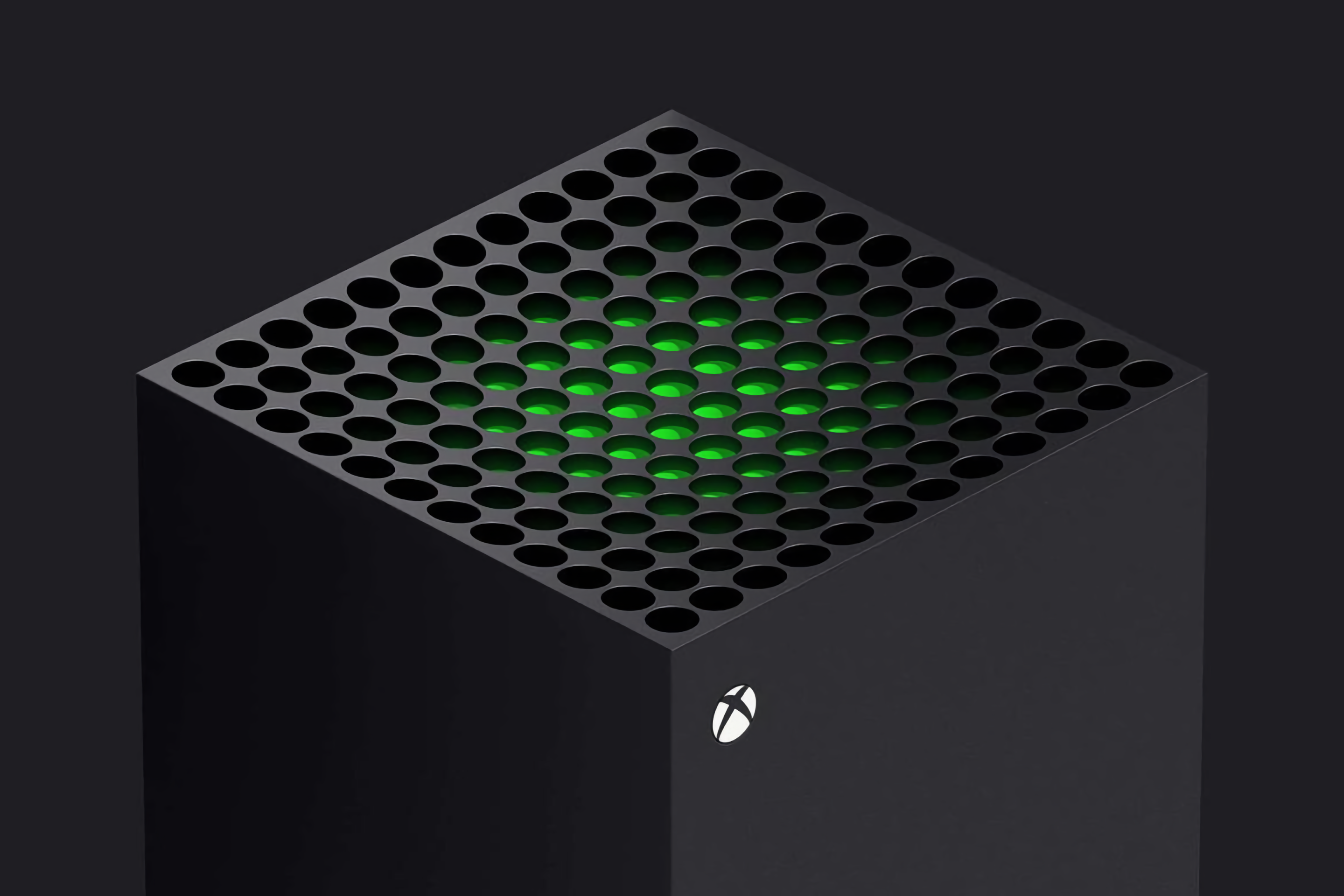
From afar, the Series S and X look like they were designed by Dieter Rams. On that topic, designer Chris Kujawski mentions that they, “certainly never set out to design something that looked like a Dieter Rams product. The result is [from] probably following many of the same principles”46.
The future
The console discussed earlier are architectural, deriving their shape from the components within. Controllers, on the other hand, are shaped by ergonomics47.
In between the launch of the One X and the latest Xboxes, the team worked with AbleGamers for three years to create the Xbox Adaptive Controller48. This was the first (and only until Sony’s announcement of Project Leonardo for PlayStation 5 in 2023) controller for people with disabilities from a major manufacturer.
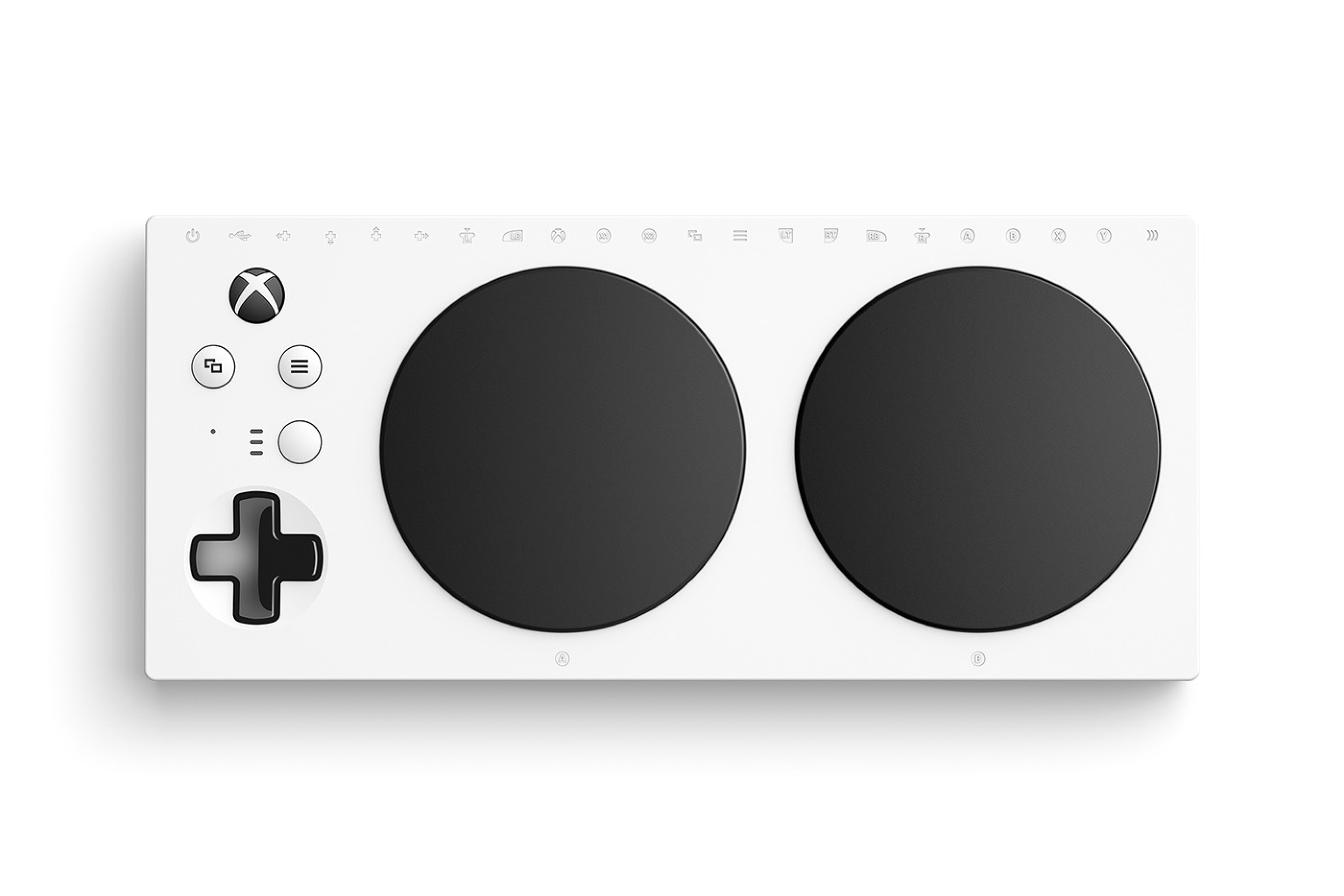
In a similar vein, the standard controller improved even more. The Xbox One controller covered the 5th to 95th percentile of hand sizes. The new controller covers the 3rd to 95th, making it more accessible to smaller hands49.
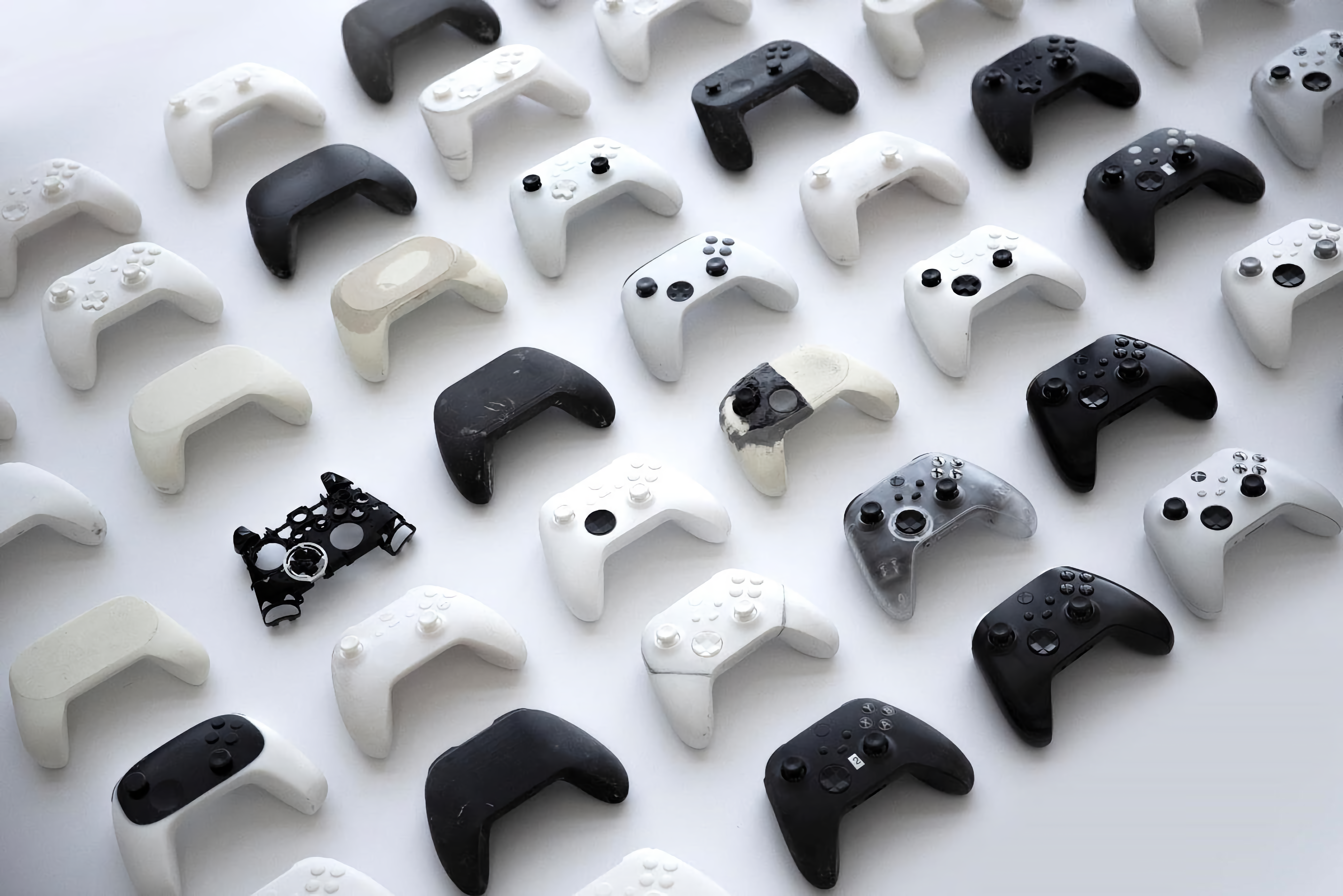
With the major investments into Xbox Game Pass (all-you-can-play game subscription), and game streaming, the Xbox experience is available on more devices than ever before. Perhaps, there may even be a future where streaming is so good that Microsoft no longer makes Xbox devices50. Until then, we can rest assured that Xboxes of the future will continue to be beautiful.
- Dell Passes Compaq as Top PC Seller in U.S. · Los Angeles Times ↩︎
- Meet the challengers to Windows' throne · CNN ↩︎
- When Did TV Watching Peak? · The Atlantic ↩︎
- Robbie Bach on the Original Xbox · Business Insider ↩︎
- Xbox: The Oral History of an American Video Game Empire · Bloomberg ↩︎
- Robbie Bach on the Original Xbox · Business Insider ↩︎
- Xbox: The Oral History of an American Video Game Empire · Bloomberg ↩︎
- The story of the Duke, the Xbox pad that existed because it had to · Engadget ↩︎
- The story behind new Xbox design · The Seattle Times ↩︎
- Carving the One: The industrial design of Microsoft's next-generation Xbox · Polygon ↩︎
- Carving the One: The industrial design of Microsoft's next-generation Xbox · Polygon ↩︎
- Carving the One: The industrial design of Microsoft's next-generation Xbox · Polygon ↩︎
- Interview: Astro A-Go-Go: Designing The Look of the Xbox 360 · Game Developer ↩︎
- Interview: Astro A-Go-Go: Designing The Look of the Xbox 360 · Game Developer ↩︎
- The Xbox One Is Microsoft’s Glitchy Vision Of The Future · Fast Company ↩︎
- Carl Ledbetter: A designer's journey · Microsoft ↩︎
- Carl Ledbetter: A designer's journey · Microsoft ↩︎
- Carl Ledbetter: A designer's journey · Microsoft ↩︎
- Designing Xbox One · Microsoft ↩︎
- Microsoft explains the design of the Xbox One · Polygon ↩︎
- The Xbox One Is Microsoft’s Glitchy Vision Of The Future · Fast Company ↩︎
- Microsoft pulls a 180, reverses Xbox One always-on DRM and used games policy · CNET ↩︎
- How Xbox outgrew the console: inside Phil Spencer’s multi-billion dollar gamble · GQ ↩︎
- Welcome Phil Spencer, Microsoft's New Xbox-Everything Honcho · Time ↩︎
- How Microsoft built the world’s most powerful game console · The Verge ↩︎
- With the new Xbox, Microsoft unveils affordable design for the masses · Fast Company ↩︎
- How Microsoft redesigned the slimline Xbox One S · WIRED ↩︎
- How Microsoft redesigned the slimline Xbox One S · WIRED ↩︎
- Xbox One S console has no Kinect port, requires USB adapter · Polygon ↩︎
- Talking console creation with the designer of the Xbox One · TechRadar ↩︎
- The Xbox E3 2016 Briefing: Everything You Need to Know · Microsoft ↩︎
- Xbox One X: What It Takes to Build a Console · Microsoft ↩︎
- How Microsoft built the world’s most powerful game console · The Verge ↩︎
- How Microsoft built the world’s most powerful game console · The Verge ↩︎
- How Microsoft built the world’s most powerful game console · The Verge ↩︎
- Behind the Design: Xbox Series X and Xbox Series S · Microsoft Design ↩︎
- Xbox Series X and Xbox Series S: Designing the Next Generation of Consoles · Microsoft ↩︎
- The Xbox has been transformed into a highly designed object · Wallpaper ↩︎
- With the new Xbox, Microsoft unveils affordable design for the masses · Fast Company ↩︎
- With the new Xbox, Microsoft unveils affordable design for the masses · Fast Company ↩︎
- With the new Xbox, Microsoft unveils affordable design for the masses · Fast Company ↩︎
- Behind the Design: Xbox Series X and Xbox Series S · Microsoft Design ↩︎
- Unboxing the Intelligent Geometry of the New Xbox Series X + Xbox Series S · Design Milk ↩︎
- Xbox Series X and Xbox Series S: Designing the Next Generation of Consoles · Microsoft ↩︎
- Behind the Design: Xbox Series X and Xbox Series S · Microsoft Design ↩︎
- With the new Xbox, Microsoft unveils affordable design for the masses · Fast Company ↩︎
- Unboxing the Intelligent Geometry of the New Xbox Series X + Xbox Series S · Design Milk ↩︎
- How Xbox outgrew the console: inside Phil Spencer’s multi-billion dollar gamble · GQ ↩︎
- With the new Xbox, Microsoft unveils affordable design for the masses · Fast Company ↩︎
- How Microsoft built the world’s most powerful game console · The Verge ↩︎
Unless otherwise noted, images courtesy Microsoft, and Evan Amos.
Thanks to Q for reading drafts of this.